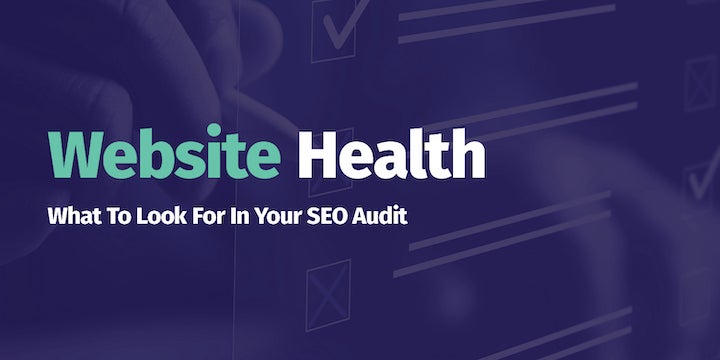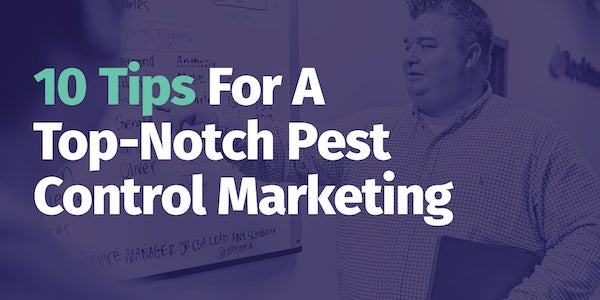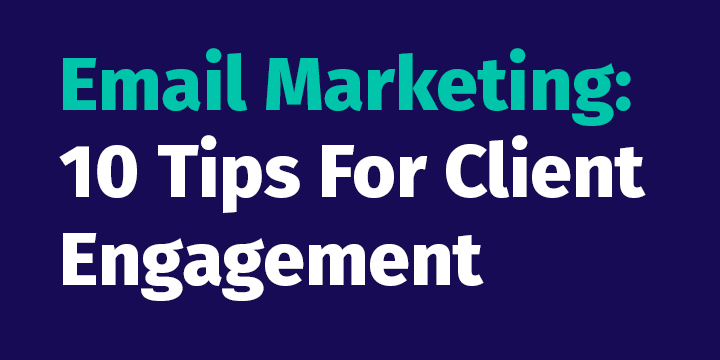Top 10 Lead Generation Considerations for Field Services

Your digital presence is all many people will see before they decide to choose you for their field service needs. A thin, outdated, or unmonitored online presence can harm your business, so it’s essential to make it a priority. Take control of who sees you and the impression that you make. It’s not enough to simply have a quiet Facebook page or cookie-cutter website. You stand to lose tons of business if your priorities don’t include creating a strong digital presence that is focused precisely on generating leads and sales.
You don’t need a degree in web development or digital marketing to be successful. But you do need to pay close attention to several factors from the outset of your digital endeavors to save yourself from lost sales. To help you get started, we’ve compiled the top 10 most important lead generation considerations when moving forward with your website and inbound marketing strategy.
Number 1: Stay Focused on Growth
You want to provide the best possible service and experience to those who trust you for their field service needs, and you want to run your business well. That’s why you emphasize constant professionalism and have top-notch technicians who are current on the latest industry techniques. It’s why you focus on hiring the best team, treat them well, and train them to follow your business’s philosophy of service.
Happy customers and happy staff are the recipes for success, right?
Almost right.
It’s definitely a huge part of the formula, and true that success won’t happen without repeat business from existing, satisfied customers. Still, if your business is to sustain itself and grow, it also needs to generate leads and close sales.
Number 2: Digital Presence is Fundamental
In the last 20 years, the way people do business has changed dramatically. The platforms that once were the gold standards for marketing have been disrupted, and many struggle to survive. Print advertisements in newspapers and trade magazines still count, but now it’s online, and digital search is now first.
Other stalwarts of marketing, such as television and radio advertising, are as abundant as they’ve ever been, but digital video and audio streaming services have changed consumer behavior. While still effective, they’re expensive, and many businesses no longer consider them to be as worthwhile as they once were.
The world has changed, thanks to the Internet.
It’s the place potential customers turn to for research, making initial contact, and engaging in on-demand, immediate, one-on-one conversations with people and businesses across the street and across the country. That’s why it’s so important to have a great website that’s engaging, informative, easy-to-use, and designed for the way your customers operate today. Once you have this, you can focus on inbound digital marketing strategies, such as pay-per-click (PPC), email, and social media marketing. But it all starts with your website.
Your website is the only thing that many potential customers will consider when looking for a field service provider, so you’d better make it a good one. If you still don’t have a website, what are you waiting for? If you do, it’s time to take a good look at it and make sure it’s really working for your business.
It makes sense to think of your website as a salesperson that works 24 hours a day, seven days a week and 365 days a year. It’s a tool that lets you communicate who you are, what you do, and what sets you apart from your competitors. How many times have you clicked away from a website because the information you were looking for was hard to find, the site was slow or bogged down with pop-ups, or it was just ugly or outdated?
Start by going to your website and try to view it through the eyes of someone who is not at all familiar with your business or the services you provide.
46% of small businesses in the United States still do not have a website in 2016. The most common reason? Almost 1/3 said it wasn’t relevant to their business/industry.
What’s the first thing you see? Can you immediately tell who you are and what you do? Is the page easy to look at, or are the colors and graphics overwhelming? Is there a clear, easy way to contact you? If a person visiting your website can’t quickly spot your contact information, they’ll be gone and on to your competitor’s page in seconds. It’s astounding how many companies make their prospective customers dig for their contact information online.
Try to read all your copy with fresh eyes. Make sure everything is clear, concise, and written to set yourself apart as an absolute expert in your field service industry. Don’t rely on your own opinion— you’re probably a little biased when it comes to your business. Ask friends or family members who don’t have any ties to your business to check out your website and give you an honest opinion about whether it’s easy to use. They might see things that you overlook.
Number 3: SEO: The Secret To More Online Traffic
Search Engine Optimization (SEO) is the difference between owning a website that makes you happy when you look at it and owning a website that gets you lots of new customers. It’s what tells people in need of field services that your website is relevant to their search. Search engines continuously crawl and index websites so that they can provide users with a ranked list of the most relevant and popular pages for their search.
The first step in improving SEO is learning more about your site and your traffic. Create a free Google Analytics account and learn more about your traffic, audience, how they’re accessing your site, how long they’re staying, what they’re reading, and where they’re coming from. If you’re signing up for the first time, it may take a bit of time before enough data has been collected to give you meaningful results.
Now it’s time to Google your business using phrases your typical customer might use, such as “residential lawn care near me” or “Dallas pest control.” Where does your website rank in the results? If you’re not on the first page, you’ve got some work to do.
Think of all the problems potential customers have in your industry that make them want to search for your help. Start a list of the ways someone would search for a solution. When you begin Googling these phrases, be sure to scroll to the bottom of the results page and look at the list of “people also searched for” phrases that have been generated for you. Include these in your list.
Once you have this, it’s time to confirm your results. Fortunately, Google has a ton of tools to help you improve your website. Head to Google Ads and begin working with its Keyword Planner. This is available to you with a free Google Ads account, and you don’t need to have purchased an ad to be able to use it. Enter phrases you’ve already identified into the tool’s search bar. Sort the suggested search terms by Keyword Volume to show the phrases in order of most searched per month.
You should also try plugging your domain name into a few of the many free keyword ranking tools online, such as http://ubersuggest.com. Examine your results and do a search using the domains of your main competitors. Go back to Google Analytics and check out which words are working best on your website.
To increase the chances that search engines like Google, Bing, and Yahoo! will rate your website highly, make sure the keywords you’ve identified are used within your site’s content. Use them to create pages that are clear, useful, informative, and optimized for the user. Make sure you have a clear hierarchy within your site with text links. Include keywords in title elements and in descriptive URLs.
Use them in page titles and descriptions— about 20 characters for page titles (the labels on the browser’s tabs when the site is open) and only a line or two for page descriptions (the short previews you get with web addresses in a lot of search results). Make sure anything you want to be indexed by the search engine is located in the text and not inside images, such as your business name existing only within a logo.
93% of all Internet traffic comes from search engines.
60% of search clicks go to the top 3 results.
Number 4: Keep Active To Stay At The Top (Of Search Rankings)
Once you have a keyword-rich site with lots of useful content, it’s time to make sure the website is an active one. That means you can’t just create a great website and let it sit there. Search engines rank pages more favorably if they are updated frequently. In addition to your regular page content updates and new images, a great way to keep your website active is to include a keyword-rich blog. Not only will this be a way to add fresh content to your site consistently, but it’s a wonderful way for potential customers to learn more about your expertise and what you can do for them.
Equally as important as improving SEO, a blog can help you improve relationships with current and prospective customers and ultimately result in more business volume. Each post improves your company’s appearance as an expert and can result in more leads and sales. In an industry where competitors provide strikingly similar services, strong online differentiation is tough to beat.
Creating good blog content doesn’t have to be complicated, and you don’t have to do it all on your own. Start with a few posts about issues relevant to your customer base and your community. For example, write short, keyword-rich posts about seasonal issues that are common where you live. Depending on your field service industry, you can write posts about what people can plant to prevent pests from destroying their lawns or write about what’s it like to be a pest control technician. Write about how customers can get ready for your visit and what they can expect.
You don’t have to be a great writer to pull off a great blog. The most critical factors are creating relevant content and making sure it is free of grammatical errors. Come up with a blog schedule and stick to it. Try writing several posts at once to give yourself and your schedule a break, and then strive to post new blog content once a week, if possible.
Finally, try to include images to make your blog content more visual. Several websites provide free stock photos for exactly this purpose. Try Public Domain Pictures, Pexels, and Pixabay. Be sure to read and understand a photo’s content license before you commit to using it.
It can be frustrating to invest lots of time and effort into improving your SEO and not see results right away. But this is a marathon, not a sprint. It may be several months before Google Analytics shows just how much your site traffic has improved, but when it does, you’ll see it not only online but on your bottom line.
81% of businesses say their company blog is useful and critical for their business.
Number 5: Tell Visitors What To Do
You know what you want visitors to your website to do, but you also have to make sure you’re prompting them to do so. A good call to action (CTA) should be on every message, every webpage, and every piece of marketing collateral you have, but it’s also a component that’s all too easy to neglect.
A CTA is a clear image or line of text that tells the reader what they should do next. They’re all around you—“Download Now,” “Sign Up Today,” or “Send My Free Report.” Your call to action should be a simple prompt for the user to take a specific action.
An effective CTA can mean the difference between gaining and losing a customer. Even if you’re trying not to pressure your audience or you’re avoiding a hard sell, a call to action absolutely must be present.
Here are some tips to help you develop effective calls to action:
Be specific.
Tell your audience exactly what their action will result in. Will they be scheduling a service? Will they receive a special discount? Will they be connected to a professional who can immediately answer their questions?
Free is good.
You downloaded this free Eguide, didn’t you? Think about whether there is something you can offer for free, such as a free lawn treatment or pool inspection.
Track responses.
Try directing users to a specific telephone extension or unique landing page. This will allow you to easily monitor how well it is working and improve your ability to tweak your approach.
Keep it simple.
Have only one call to action per piece. Don’t clutter it up with too much explanatory language.
Use active language.
This can include words such as schedule, buy, register, and subscribe.
Make it personal.
Use words like “my” instead of “your.” This personalization has been proven to affect the likelihood that a user will follow through.
Use the crowd.
Place social proof, such as testimonials and customer reviews, near your call to action. People are more likely to do something if it looks like other people are already satisfied with your services.
Make it visible.
Don’t bury your CTA in the copy. A brightly colored box, image, or another graphic element can help your CTA stand out. Be sure to position it somewhere that it will quickly be seen and set apart with white space.
Number 6: Local SEO
The first page of Google is continually changing. Possibly the biggest change in recent years was the introduction of the Local Map Pack. The Local Map Pack receives a higher percentage of the clicks than the #1 organic position — making it the new ranking goal for every local business.
The Local Map Pack is powered by the Google My Business (GMB) product. Like organic search results, many factors are considered by algorithms to determine rankings. Some of these ranking factors include:
Physical location (searcher and business)
Business categorization
Number of reviews (and rating)
Brand value
Number of online citations (Name, Address, Phone)
Research has shown that traffic originating from GMB listings converts into leads significantly better than any other online marketing channel.
68% better than Paid Ads
83% better than Direct Traffic
83% better than Social
91% better than Referral
Number 7: Pay-Per-Click (PPC) Works
Pay-per-click (PPC) ads are one of the best ways to spend our marketing dollars. This form of advertising allows you to focus your dollars on reaching people who are actively searching for your services or on those you specifically target.
Have you noticed that you’ll often find paid results at the top of search results when you search for something? You can tell by the small “Ad” designation beside these search results, which otherwise look identical to what you are expecting Google to serve up. PPC advertising makes sense for field service owners. It’s easy to do, offers results that are straightforward to measure and track, can be quickly tweaked based on your results, and provides you with a ton of useful data.
You can start by determining which platform you prefer. Google Ads is the largest PPC provider, but it’s by no means your only choice.
You will be able to precisely target the keywords and visitor characteristics you desire most and tightly control your expense as your ad goes live. As the name suggests, you are charged for PPC advertisements when someone clicks on them.
Consider running modest campaigns on a couple of platforms over several months (a minimum of four) to figure out which platforms work best for your business and your customer base.
It’s critically important to be acutely aware of your spelling and grammar when using PPC ads. A simple typo can make you look like an amateur, rather than the professional you are. It’s no wonder that PPC is one of the most popular marketing solutions.
41% go to the top three paid ads in search results. PPC visitors are 50% more likely to make a purchase than organic visitors.
Number 8: Keep Your Goals In Sight
Your website looks great, and your social media channels are rich and active. Everything so far has been completed with a sharp focus on increasing leads and getting more customers. Lead generation is a critical component of all your marketing efforts, but now it’s time to focus.
Review your revenue, expenses, and cancellations and develop a clear picture of the health of your business. Figure out how many customers you need to maintain last year’s level of sales. Look at how close you are to hitting last year’s target or how much you plan to surpass it by. You are then ready to figure out:
1. What is your target revenue goal?
2. How many new customers do you need to achieve this?
3. How many new qualified leads do you need to reach the number of customers forecasted for your calculated growth?
20% is an exceptional rate of growth
Many field service operators have no clue how much each customer is worth to their business. By calculating this figure, you’ll be able to determine how large a marketing budget makes sense for your business. Examine your customer rolls and figure out how often regular customers schedule service and what the average transaction amount is for these services.
For example, suppose you’re in the lawn service industry, and an average customer is spending $120 for services every two months. In that case, you can multiply $120 by six to determine the value of a new customer is $720 annually. If your goal is an additional $50,000 in sales per year, you need 70 more regular customers to hit your target. Factor in how many regular customers cancel per year and add this to your goal.
Now your need to figure out how many first-time buyers it takes to generate a single new customer. Look at your records to figure out your conversion ratio. If, say, the rate is 25%, you need four times as many first-time customers (280) to end up with 70 more regular customers. Divide the number of needed first time customers by 12, and you have the number of new customers you need per month to hit $50,000 in increased annual revenue.
Finally, you need to figure out your lead conversion rate. If you close sales on about half of all qualified leads you receive, you know that you need 560 additional leads annually (47 monthly) to reach your goal. Once you know this, you’re ready to determine how much you are willing to pay for each of these leads. You can then create a marketing budget and develop an inbound marketing strategy.
7%-8% is higher than average growth across industries.
Number 9: Make Inbound Marketing Foundational To Your Strategy
Making digital a large part of your inbound marketing strategy is a sound practice in today’s digital-first world. The rise of digital platforms not only allows consumers to make more intelligent, informed decisions quickly, but they also provide a huge opportunity for field service companies to demonstrate who they are and what they do.
The Internet has also created the perfect stage for inbound marketing, the powerful practice of creating meaningful content to attract potential customers to your website, blog, or social media page and, ultimately, move them through your sales funnel. It has come to play a large role in the way many businesses market themselves, often surpassing outbound marketing tactics such as television, radio, direct mail, or newspaper advertising.
The beauty of inbound marketing is it can be extremely successful and cost-effective for small and large field service companies alike. You are creating an inviting and informative online presence with a strategic goal of bringing in visitors organically.
Inbound marketing makes particularly good sense in the field service industry for several reasons:
It brings in qualified people who are actively searching for solutions to their pest, pool, or lawn care problems, which results in higher close rates.
It allows you to present yourself as an industry expert focused on making the lives of your customers easier.
It helps you build on leads that are drawn to you over time and through multiple engagements.
Long-term growth is promoted as your overall body of content grows. The digital catalog you build will last long into the future.
It can be less expensive, faster, more targeted, and more effective than traditional outbound strategies like cold calls and flyers.
How much you spend is a factor that you can easily control and adjust as needed.
Analytics, such as Google Analytics and those built into social media platforms, make it easy to track campaign performance and allow you to adjust your spending based on successes you are seeing.
Your Inbound Marketing Strategy Should Have Several Elements:
Content
Creating and sharing digital material intended to spark interest in your company and the services you provide is called content marketing, and it’s involved in almost everything we’ve discussed so far. It includes blogs, videos, articles, website copy, photos, and infographics.
SEO
Incorporating targeted keywords into all your digital content and linking to your website will improve SEO and increase the chances that the right customers searching for your services in your area will be directed to your website.
Local SEO
In addition to social media sites, which have a high local focus, you must work to rank in local results. Find, claim, or create your local listings on websites such as Yelp, SuperPages, Google My Business, Bing Places, and Yellow Pages. Make sure your business name, phone number, website, and physical address are the same across all the sites.
Social Media
As previously discussed, social media will help you connect directly with potential customers and improve your customer service. But it’s also a valuable tool to network with other professionals and to stay on top of what your competitors are doing.
Paid Digital Ads
Pay-per-click and display advertising can improve your chances of being seen by potential customers. While display advertising shows digital ads for your business on relevant web pages, PPC shows your ads on a search engine results page based on a specific search (“Dallas pool care” for example).
Reviews
By prompting satisfied customers to review your services online, you will be adding to your positive digital footprint while making a great impression on people in need of your services. Always respond to reviews immediately (both good and bad) to build relationships and show that you are an engaged service provider
Number 10: Plan How To Get It All Done
Having a thorough marketing plan heavily focused on great lead generation is only half the battle. Once you have your goals and determine how you’re going to achieve them, it’s time to put it all into action.
Sometimes this is the part that’s easier said than done. You certainly can take it on yourself, but it may end up being more of a time investment than you’d like. It’s also important to remember that marketing is a specialized skill set that will come more naturally to some than others. All considered, you have four options:
Do it yourself
Entrust this to a assigned member of your team
Hire a marketing manager
Outsource it to experts
There’s no wrong solution, but it’s important to consider what you actually have time to do with all your other responsibilities as a business owner.
If you are going to take on the duty yourself, there are ways to make it more manageable.
Do it one step at a time.
Rather than allowing yourself to become overwhelmed by the amount of work ahead, divide up your marketing plan into smaller pieces that are easily handled.
Don’t do it alone.
Delegate certain aspects to members of your team who have a proven performance record and an interest in what may be a fun departure from their regular job duties. Explain what is expected and provide resources and tutorials to help get it done. them get it done.
Keep communicating.
Talk frequently with everyone who is working on implementing part of your marketing plan. Make sure everyone understands what they are being asked to do and is doing it well.
Monitor progress.
It’s important to keep an eye on how your employees are doing, but it’s equally important to monitor the success of your efforts.
Adapt.
As you track and figure out what is working for you, you should do more of that. Tweak your plan to build on your successes and let go of strategies that aren’t working for you. Remain flexible as you work through your plan.
There is going to be a lot of trial and error, especially in the beginning. Keep this in mind, stay engaged, and soon you’ll start benefitting from the fruits of your labor.
Your Partner in Growth
We hope this guide has been helpful. Whether you’re looking to add efficiencies, make things easier for your employees, improve your customer experience, increase sales, or anything in between, FieldRoutes™ is committed to helping your business reach its full potential.
The platform automates all aspects of field service operations for enterprise and small business customers that span office management, advanced route optimization, payment processing, digital sales, marketing, and customer acquisition solutions that accelerate growth, streamline operations, increase customer retention, and maximize revenue. Our operations and sales and marketing suites were built with your customers and employees in mind and can help you grow quickly, scale intelligently, and serve customers relentlessly.
Call for a Demo at 214.466.1765
Join the growing number of thriving businesses using FieldRoutes to acquire new customers, improve automation, and crush the competition.





